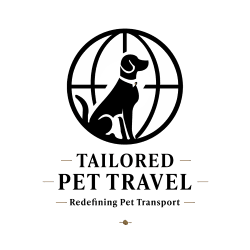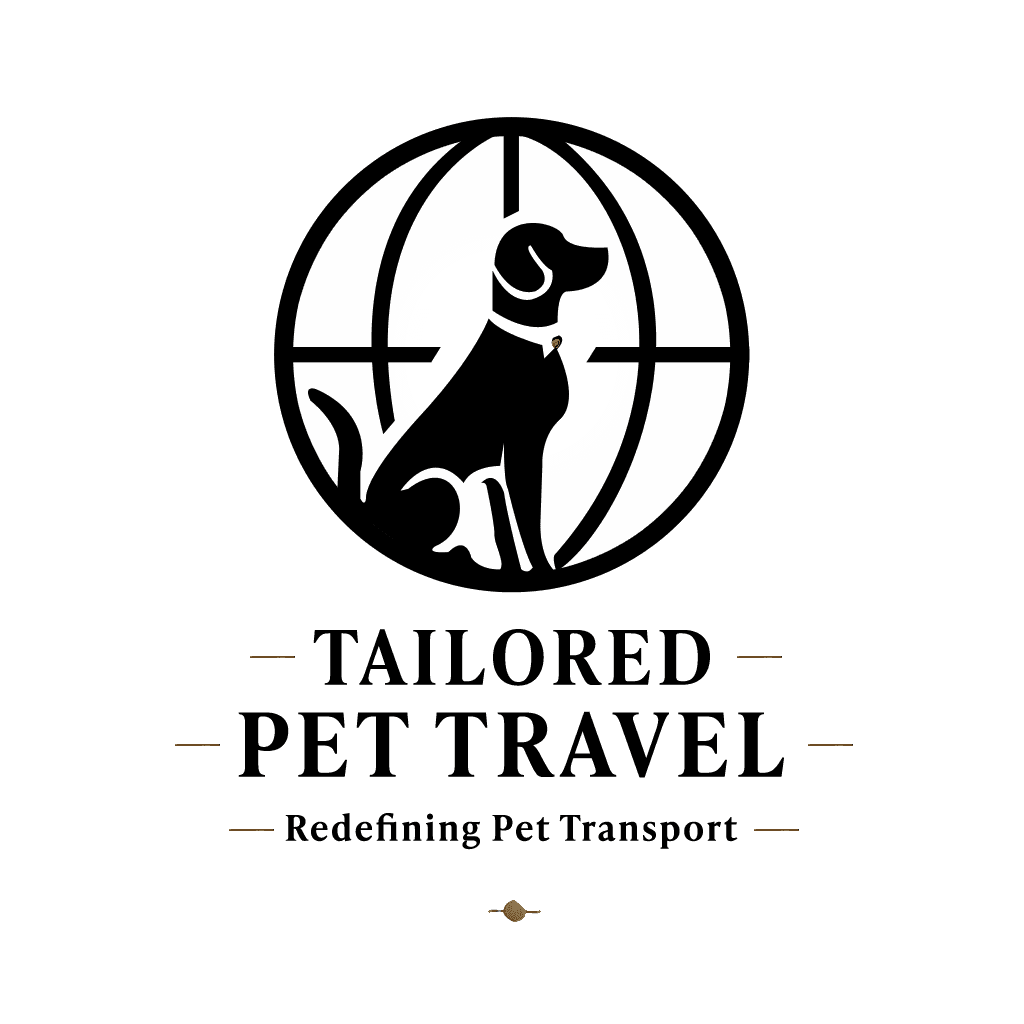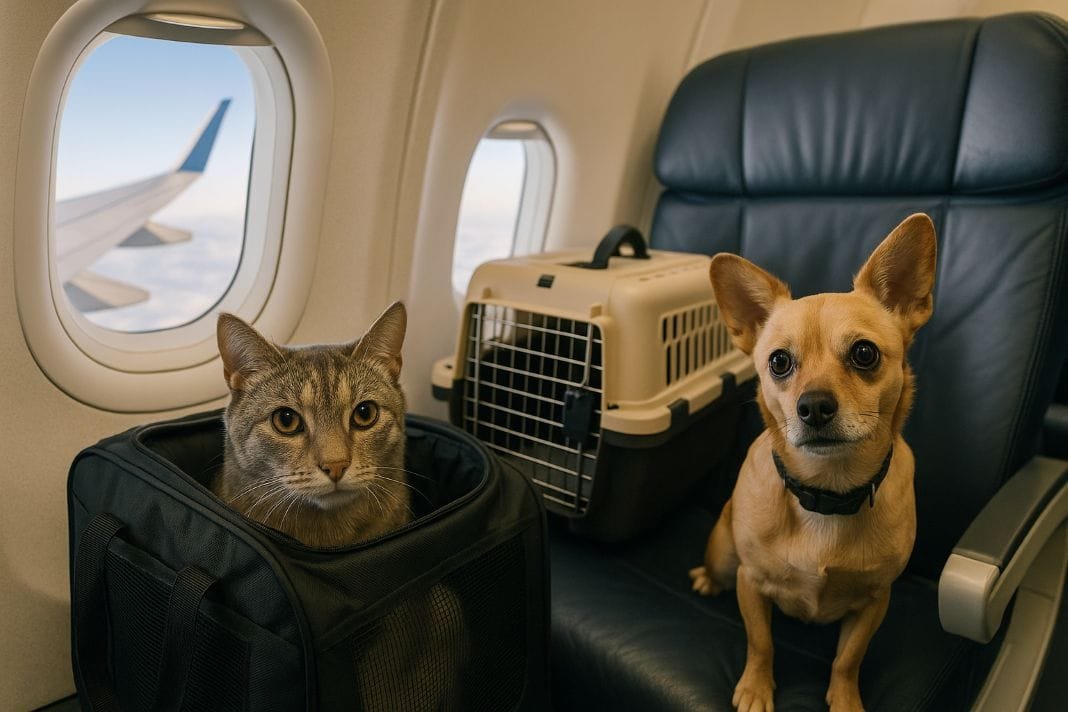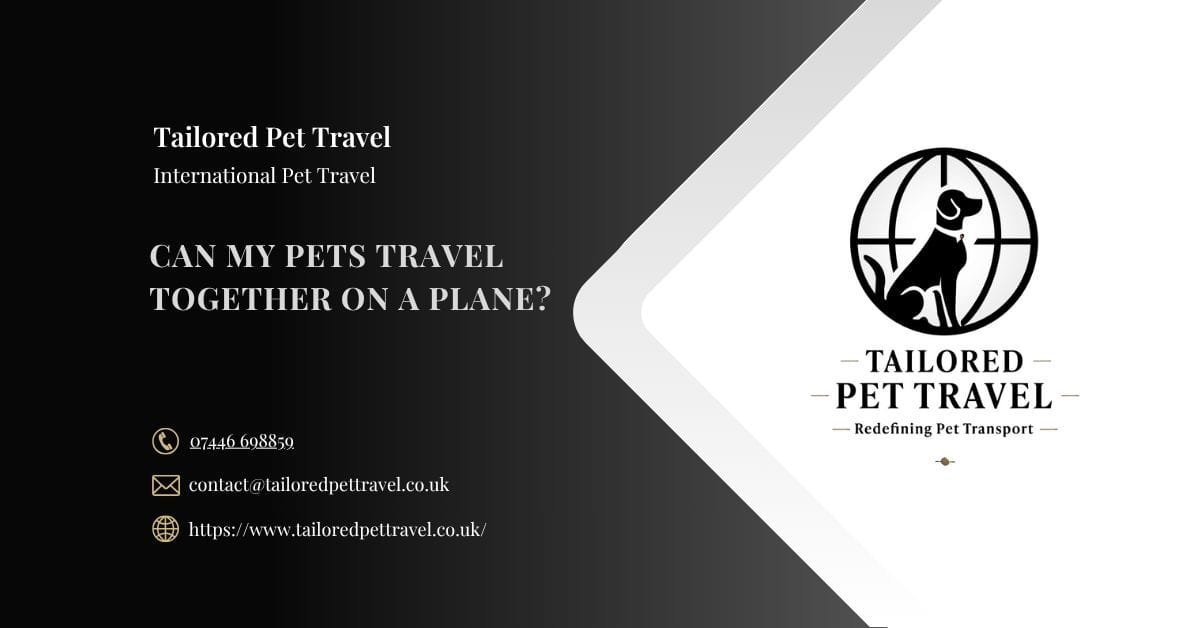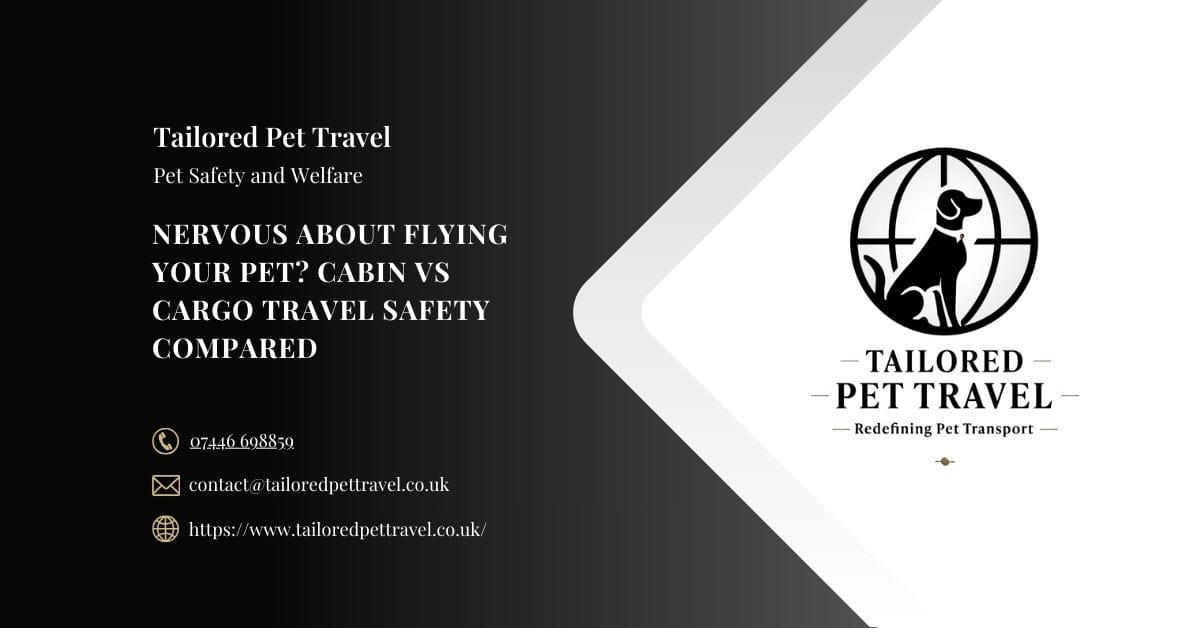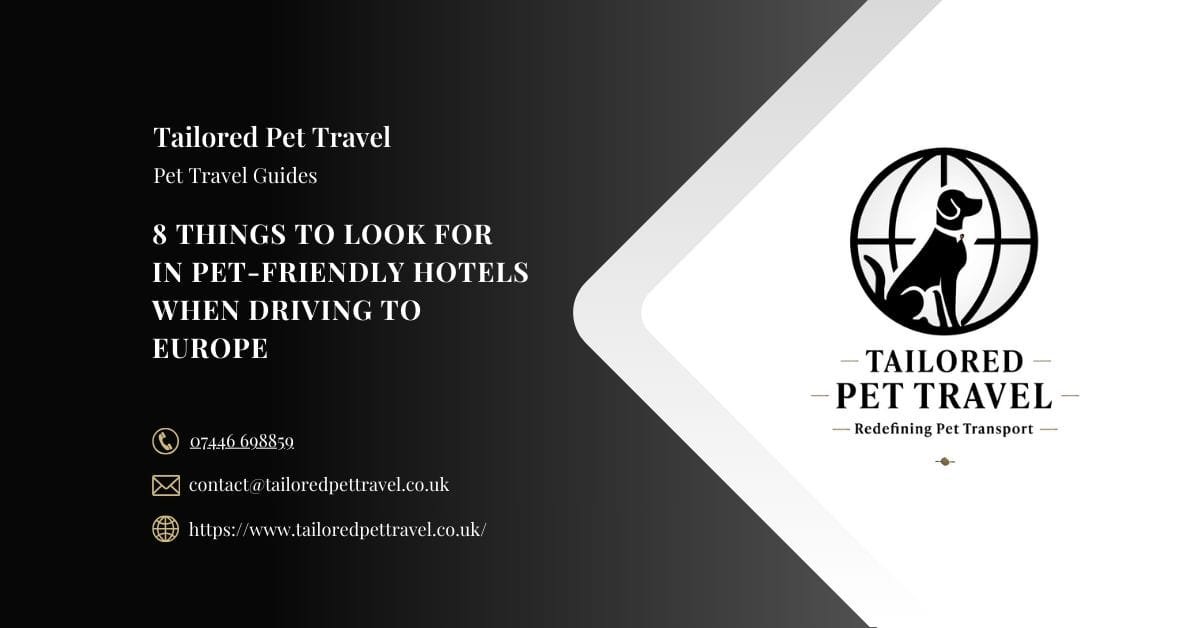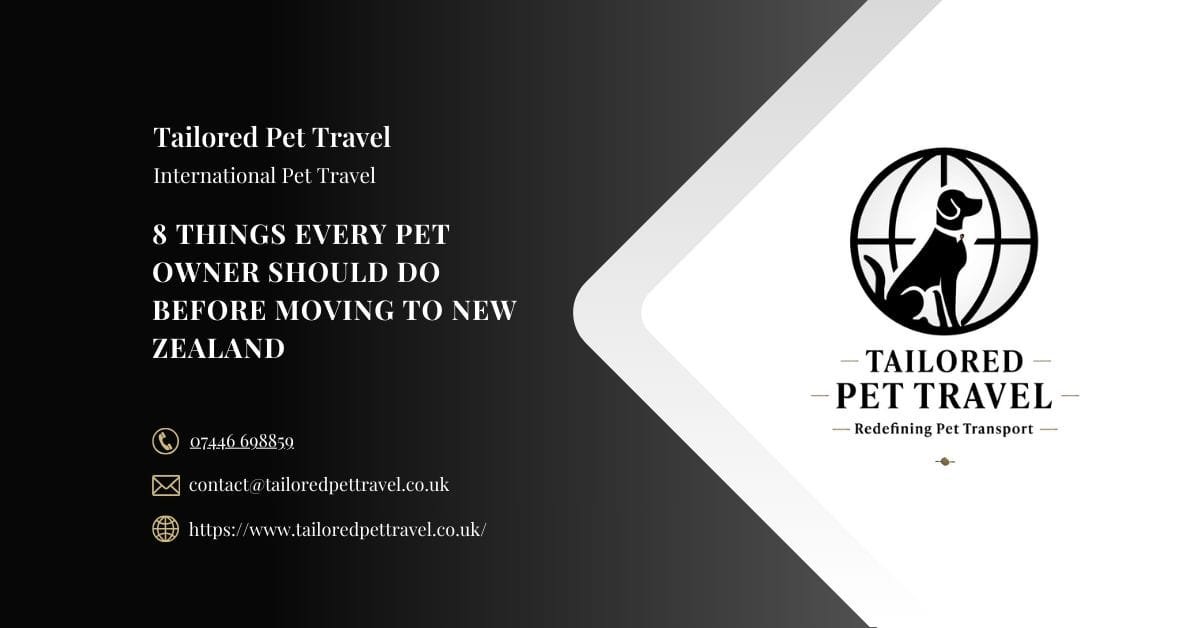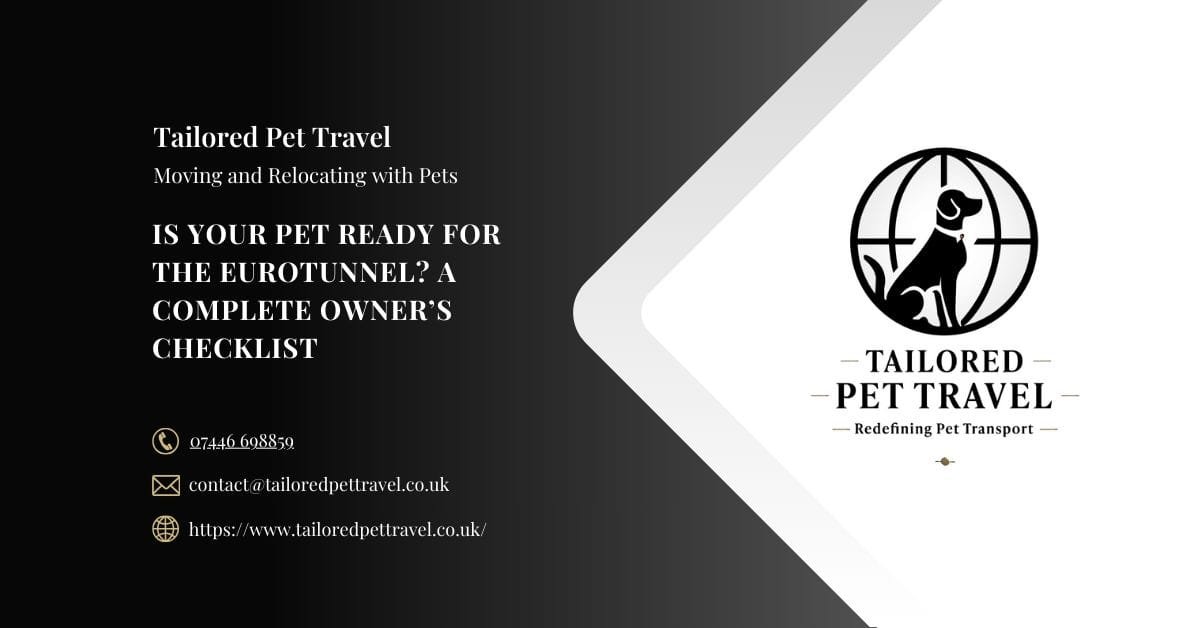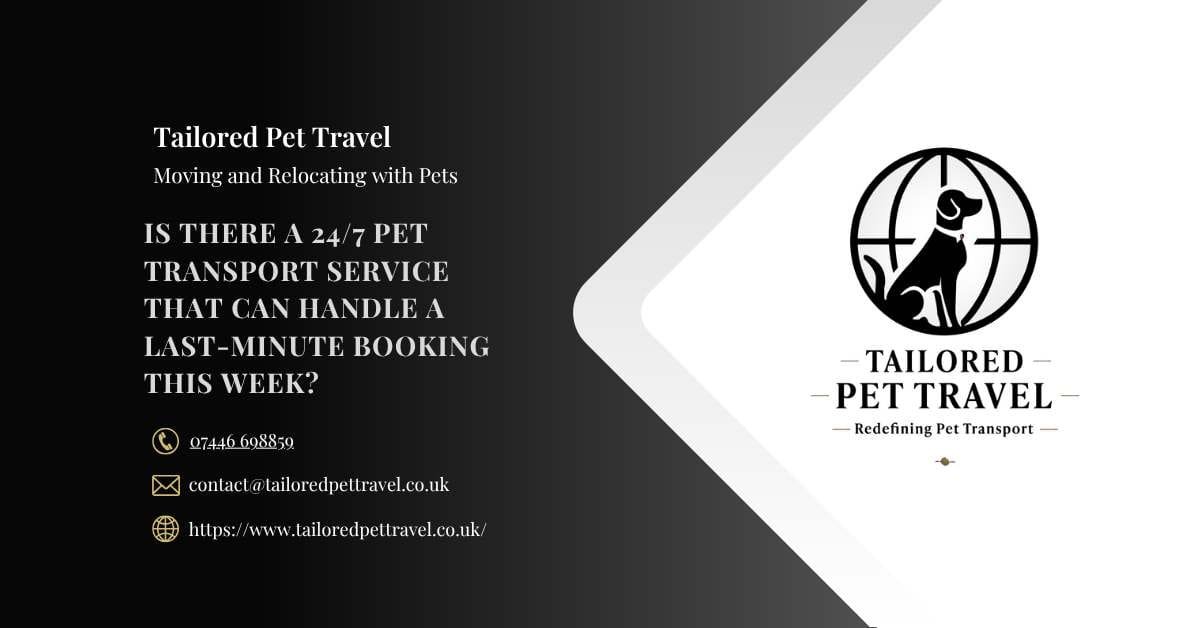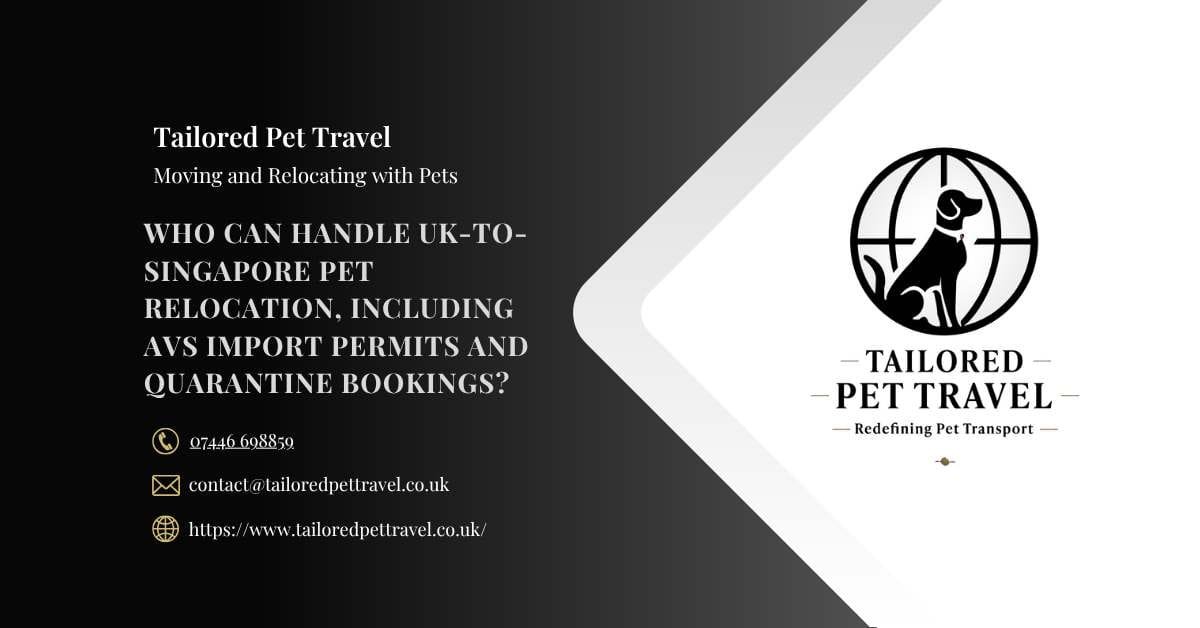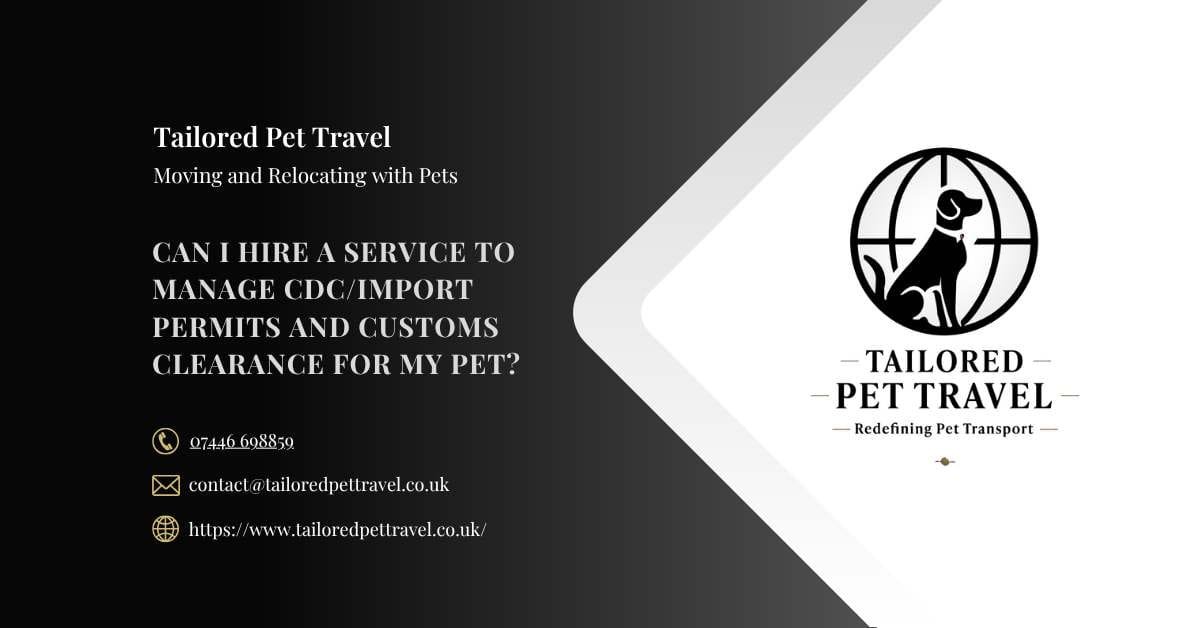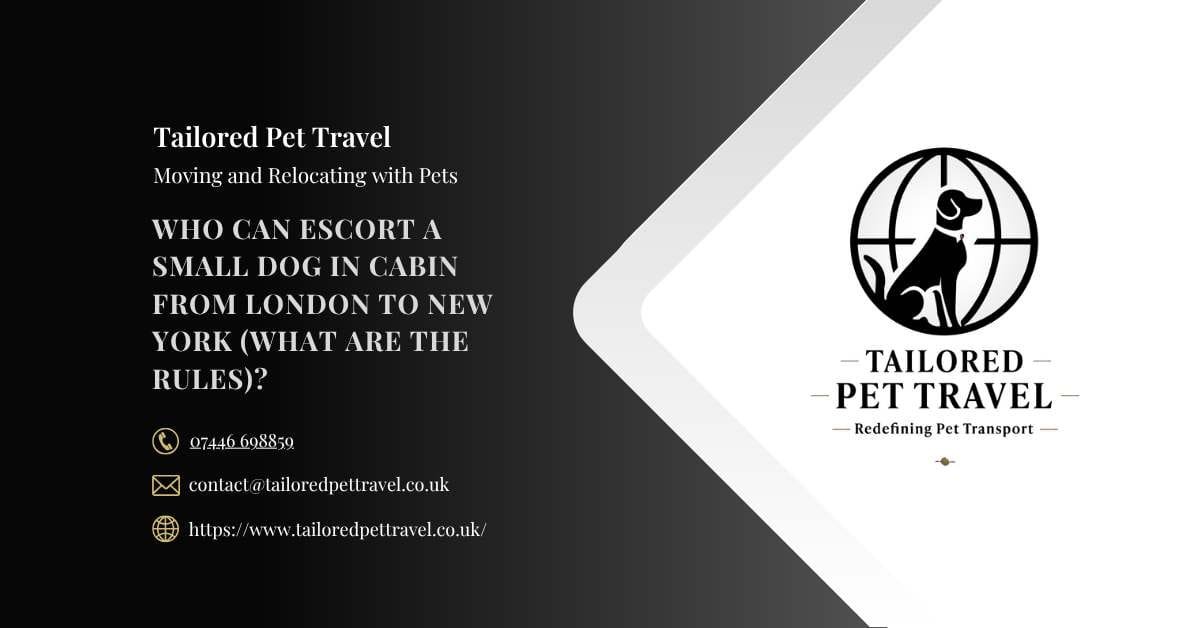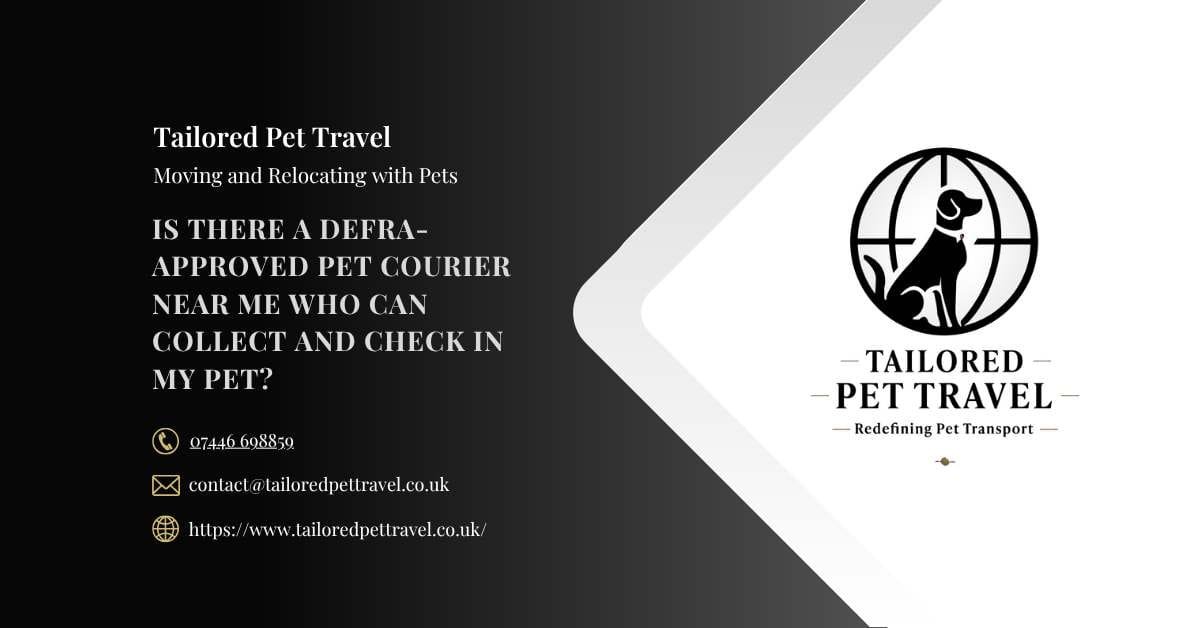Can my pets travel together on a plane?
Yes, but the answer depends heavily on the airline, the species and size of your pets, and where in the plane they are travelling. Some airlines only allow one pet per passenger in cabin, while others offer flexible cargo options for pets of the same species. In recent years, pet travel has transformed from a logistical challenge into a premium service complete with smart crates, luxury amenities, and growing cultural acceptance. Here’s everything UK pet owners need to know about flying with multiple furry or scaly companions.
From breed rules to behavioural preparation, modern pet flight services are moving fast. As airline rules begin to shift and high end options gain popularity, flying with pets is becoming more inclusive, more comfortable, and more flexible for UK families.
Here's What We Have Covered In This Article
From Crates to Champagne: The New Era of Pet Air Travel
The Rise of Luxury Pet Travel Services
Once confined to noisy cargo holds, pets are now experiencing a new golden age of air travel. The rise of luxury pet travel services marks a shift in how airlines and jet services cater to four legged passengers. Premium pet flight options like those offered by Bark Air and VistaJet are leading the way for high end, pet inclusive journeys.
VistaJet and Heated Flooring for Reptiles
Luxury animal travel is no longer limited to pampered dogs. VistaJet, a leading private aviation provider, has introduced features such as heated flooring designed to keep cold blooded animals like tortoises comfortable at altitude. Their onboard pet concierge ensures that every detail, from diet to climate control, is precisely managed. This service sits at the top end of private jet pets and is often preferred by those transporting reptiles or other exotic animals.
Bark Air and the “Doggie Champagne” Experience
Meanwhile, Bark Air, the luxury airline for dogs, has redefined how in cabin comfort can look. With pheromone infused air circulation, noise control, smart crate arrangements and dog friendly refreshments, Bark Air’s approach to luxury pet travel includes thoughtful touches such as doggie champagne and calming lighting.
Delta’s CarePod: Innovation Meets Comfort
Delta Airlines offers the high tech CarePod as a reliable middle ground for owners seeking safer pet cargo solutions. The CarePod is equipped with real time GPS tracking, airflow control, and water supply monitoring, and is ideal for small to medium pets. It reflects Delta’s shift toward premium pet airplane services without the private jet price tag.
IATA’s Role in Shaping Pet Air Travel
The International Air Transport Association (IATA) continues to influence industry wide standards for pet travel. Their technical requirements for crate size, ventilation, and species specific guidelines ensure that airlines remain compliant with welfare rules while developing their own cabin pet policy and cargo regulations.
Pro Tip: Dogs with reactivity issues often benefit from a window seat or a quieter corner in pet-approved cabins. Always check if your airline lets you choose seat placement for in-cabin pets.
Book Stress-Free Pet Flights
Let us handle everything from crate setup to concierge coordination. Your pet’s journey starts here.
Can they travel together on a plane?
How many pets can you take in the cabin?
Most airlines including American Airlines enforce a one pet per passenger rule for in cabin flights. For households with more than one animal, this presents a challenge, especially on routes with limited pet slots. A second pet often has to travel as checked cargo unless accompanied by a second traveller.
Cargo Hold Options for Multiple Pets
For passengers travelling with two pets of the same species and similar size, airlines sometimes allow shared crate transport in the cargo hold. This applies to many domestic flights and is particularly common for bonded cats or small dogs. Ensure you review weight limits, crate ventilation standards, and whether the crate allows both animals enough room to stand, turn, and lie down comfortably.
Virgin Australia’s Cabin Pet Proposal and Industry Feedback
Virgin Australia’s proposal to allow pets in the cabin on domestic flights has sparked a wave of conversation among frequent flyers and pet advocacy groups. Supporters highlight the growing demand for pet friendly airline services while critics voice concerns about allergies, noise, and cabin cleanliness. If successful, this policy could inspire change across other international carriers.
Airline Micro Rules: Carrier Types, Weight and Breed Limits
Every airline has slightly different policies around cabin crates, in cabin pet behaviour, and allowed breeds. Some restrict brachycephalic (short nosed) dogs like Pugs and Bulldogs from flying due to respiratory risks. Others will limit in cabin carrier dimensions to specific measurements. JetBlue and British Airways, for instance, outline these clearly on their official pet travel pages. See British Airways pet travel guidance.
Booking Tips and Pet Travel Planning Advice
Book well in advance when flying with animals. Spaces are limited, especially for in cabin transport. Always confirm your pet’s eligibility, crate type, and weight limits with the airline directly. You can also check each airline’s official page for details, such as the American Airlines pet travel policy, which includes crate guidance and fees.
Get a Custom Pet Travel Plan
Not sure how to fly with two pets? We’ll design a travel plan that meets your pets’ needs and your itinerary.
How do you keep pets calm and safe during air travel?
Sedatives Can Be Risky for Pets in Flight
Sedating pets before a flight can impair breathing and temperature regulation, especially at cruising altitude. UK vets typically recommend avoiding sedatives except under very specific guidance. For longer journeys, natural techniques like scent soothing or behaviour reinforcement can be more effective.
Preparing Pets Emotionally for the Journey
Keep your pet’s daily routine as stable as possible leading up to travel day. Maintain walk times, feeding schedules, and sleep routines to lower their stress baseline. Introduce the crate into this routine early, so it feels familiar by the time they board.
Crate Training and Positive Rewards
Encourage your pet to explore their crate using praise and treats. Let them spend short bursts of time resting inside, gradually increasing this period. For many pets, a crate becomes a safe zone when associated with calm time, favourite toys, and affection.
Vet Approved Flight Prep
Before flying, speak with your vet to confirm your pet is healthy enough to travel. Vets will often give practical advice on feeding times, water availability, and travel friendly products for motion sickness. Some also issue travel certificates if required for international flights.
Comfort Through Familiar Scents
Including a worn T shirt or blanket inside the crate is a simple way to offer comfort. These personal scents help soothe anxiety and create a stable emotional anchor during transit. Behaviour specialists often recommend this method over unfamiliar toys or synthetic pheromones.
What if your dog is reactive or highly anxious?
Over 68 percent of dog owners say their pets are reactive or anxious, especially in unfamiliar settings. Many choose alternative routes or opt for private rentals over busy hotels. If your dog shows reactive behaviour, consider avoiding crowded flights and airports. Focus on privacy and comfort. Pet behaviour experts recommend planning for short, flexible travel days with plenty of calm space.
Pro Tip:Travelling with two pets? Ask the airline if you can link bookings with a partner or family member to allow two in-cabin crates under separate names.
Are pets really family now? How UK culture is reshaping pet travel
Millennials and Gen Z are Putting Pets First
Younger generations in the UK are changing the way people travel. Many now choose pet friendly destinations. The rise in pet first decision making reflects broader trends in how animals are viewed within modern households.
Pet Travel Apps and Booking Services Are Growing
Apps like TrustedHousesitters, Pet Friendly Travel and BringFido make it easier to find hotels, routes, and services that allow pets. These platforms highlight nearby vets, pet friendly attractions, and transit information. They also help owners avoid last minute travel restrictions.
How much are people spending on pet travel in the UK?
Recent industry forecasts predict the pet travel market will surpass £157 billion globally. In the UK, this growth is driven by increased pet ownership and rising expectations for pet inclusive holidays. People are actively seeking flights, rentals and experiences that welcome their animals.
However, cost remains a common barrier. Over 90 percent of dog owners say they end up spending the same or more to travel with their pets compared to leaving them at home. Many change their destination, accommodation, or even travel dates to make it work.
Loyalty Programmes and Pet Focused Offers
Major brands are starting to include pets in their loyalty schemes. Some hotel chains allow pets to stay free on points bookings. Airlines like Delta and JetBlue have started offering free pet booking credits or onboard perks for frequent flyers.
The Human Animal Bond is Driving Change
For many in the UK, pets are treated with the same care and planning as children when it comes to holidays. This emotional connection is influencing airline pet policy, product development, and customer experience strategy. Companies that cater to pet parents tend to see higher loyalty and stronger word of mouth.
Some owners also choose not to travel at all when their pets have high care needs. A growing number plan holidays around what works for their dog’s comfort, even if it means staying local or travelling separately. The shift in sentiment puts animal wellbeing ahead of convenience.
